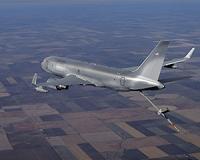| . |  |
. |
New Delhi (UPI) Feb 3, 2011 Senior research officials in India say they are confident the indigenous, and delayed, Kaveri jet engine will power the fifth-generation Advanced Medium Combat Aircraft. The Kaveri has been under development for around 20 years by the Gas Turbine Research Establishment, a laboratory division of the government's Defense Research and Development Organization in Bangalore, India. The GTRE has been working with other DRDO labs, academic institutions and industry partners. It also began working with French engine manufacturer Snecma, part of the Safran Group, in early 2008 to improve the Kaveri's performance. Technical and bureaucratic delays have meant around $455 million has been spent on the engine, expected to be ready by 2017. The hookup with Snecma has meant a likely boost in thrust that will make it suitable for the AMCA, a DRDO official told the Press Trust of India. He said the engine has been able to produce 70-75 kilo newtons of thrust. However, Indian air force and other stakeholders are looking for 90-95 KN. "I think with the joint venture Snecma in place now, we would be able to achieve these parameters in near future," he told PTI. The 150 twin-engine Advanced Medium Combat Aircraft are expected to be in service beginning in 2020 and will complement the Tejas, a single-engine Light Combat Aircraft. The AMCA are to replace the air force's aging SEPECAT Jaguar and Dassault Mirage 2000 aircraft. The Kaveri engine began development in 1986 and was designed originally for Tejas that first flew in January 2001. The Indian air force is likely to need 200 single-seat and 20 two-seat trainers. The Indian navy is said to want up to 40 single-seaters to replace its aging fleet of Sea Harrier FRS51 and Harrier T60. The government's Aeronautical Development Agency, set up in Bangalore in 1984 to oversee development of the Tejas, also is leading on work for the AMCA. General Electric's GE F404 engine has been powering prototype Tejas aircraft. Late last year the Ministry of Defense said until the Kaveri engine is ready, India will use the upgraded GE F414 engines for the first 100 Tejas aircraft, expected to be in service later this year. The F414 units are an afterburning turbofan engine developed from the F404 turbofan for use in the Boeing F/A-18E/F Super Hornet. In 2004, the Kaveri failed high-altitude tests in Russia, ending hopes of installing in it the first Tejas aircraft. But the engine passed a milestone in November when India used an Ilyushin Il-76 transport as a test bed flown at Russia's Gromov Flight Research Institute near Moscow. The engine was tested from takeoff to landing and flew for more than an hour up to an altitude of 19,700 feet at a speed of Mach 0.6 in its maiden flight, a statement by India's defense ministry said at the time. The pilot controlled the engine and a number of taxi trials were carried out before the flight. However, ministry didn't issue performance details, such as engine thrust, a problem with the engine in the past. Up to 60 test flights are envisaged to bring it up to acceptable reliability, safety and airworthiness before putting it into a fighter aircraft.
Share This Article With Planet Earth
Related Links The Military Industrial Complex at SpaceWar.com Learn about the Superpowers of the 21st Century at SpaceWar.com
 Boeing to revise bid for US military tanker deal
Boeing to revise bid for US military tanker dealWashington (AFP) Feb 1, 2011 Boeing said Tuesday it would submit a new, "final" bid for a $35 billion contract to supply the US military with 179 aerial refueling tankers, as it tries to beat European rival Airbus. A Boeing spokesman said the firm and US Air Force officials held talks Monday to discuss the company's proposal and revisions would follow. "This was our last opportunity to get feedback from the Air Forc ... read more |
|
| The content herein, unless otherwise known to be public domain, are Copyright 1995-2010 - SpaceDaily. AFP and UPI Wire Stories are copyright Agence France-Presse and United Press International. ESA Portal Reports are copyright European Space Agency. All NASA sourced material is public domain. Additional copyrights may apply in whole or part to other bona fide parties. Advertising does not imply endorsement,agreement or approval of any opinions, statements or information provided by SpaceDaily on any Web page published or hosted by SpaceDaily. Privacy Statement |